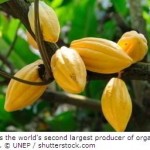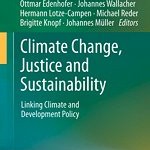- None of the twenty-one subsidiary targets accompanying the overall 2010 biodiversity target can be said definitively to have been achieved globally, although some have been partially or locally achieved. Ten of fifteen headline indicators developed by the CBD show trends unfavorable for biodiversity.
- No government claims to have completely met the 2010 biodiversity target at the national level, and around one-fifth state explicitly that it has not been met.
- Species that have been assessed for extinction risk are on average moving closer to extinction, with amphibians facing the greatest risk and coral species deteriorating most rapidly.
- The abundance of vertebrate species, based on assessed populations, fell by nearly one-third on average between 1970 and 2006, and continues to fall globally, with especially severe declines in the tropics and among freshwater species.
- Natural habitats in most parts of the world continue to decline in extent and integrity, notably freshwater wetlands, sea-ice habitats, salt marshes, coral reefs, seagrass beds and shellfish reefs; although there has been significant progress in slowing the rate of loss of tropical forests and mangroves, in some regions.
- Crop and livestock genetic diversity continues to decline in agricultural systems. For example, more than sixty breeds of livestock are reported to have become extinct since 2000.
- The five principal pressures directly driving biodiversity loss (habitat change, over-exploitation, pollution, invasive alien species and climate change) are either constant or increasing in intensity.
- There has been significant progress in the increase of protected areas both on land and in coastal waters. However, 44% of terrestrial eco-regions (areas with a large proportion of shared species and habitat types), and 82% of marine eco-regions, fall below the target of 10% protection. The majority of sites judged to be of special importance to biodiversity also fall outside protected areas.
Biodiversity Futures for the 21st Century
Scientists from a wide range of disciplines came together as part of the preparation of GBO-3 to identify possible future outcomes for biodiversity during the current century, based on observed trends, models and experiments. Their principal conclusions include:
- Projections of the impact of global change on biodiversity show continuing and often accelerating species extinctions, loss of natural habitat, and changes in the distribution and abundance of species, species groups and biomes over the 21st Century.
- There is a high risk of dramatic biodiversity loss and accompanying degradation of a broad range of ecosystem services if the Earth system is pushed beyond certain thresholds or tipping points.
- Earlier assessments have underestimated the potential severity of biodiversity loss based on plausible scenarios, because the impacts of passing tipping points or thresholds of ecosystem change have not previously been taken into account.
- There are greater opportunities than identified in earlier assessments to address the biodiversity crisis while contributing to other social objectives; for example, by reducing the scale of climate change without large-scale deployment of biofuels and accompanying loss of natural habitats.
- Biodiversity and ecosystem changes could be prevented, significantly reduced or even reversed if strong action is applied urgently, comprehensively and appropriately, at international, national and local levels.
Towards a Strategy for Reducing Biodiversity Loss
GBO-3 sets out a number of elements that could be considered in a future strategy to reduce biodiversity loss, and avoid the worst impacts of the scenarios analyzed in the Outlook. It is likely to form the basis of discussion of the strategic plan currently being considered for the next decade of the Convention on Biological Diversity, and due to be agreed at the 10th meeting of the Conference of Parties to the CBD in Nagoya, Japan, in October 2010. The elements include:
- Continued and intensified direct intervention to reduce loss of biodiversity, for example through expanding and strengthening protected areas, and programmes targeted at vulnerable species and habitats;
- Continued and intensified measures to reduce the direct pressures on biodiversity, such as preventing nutrient pollution, cutting off the pathways for introduction of alien invasive species, and introducing more sustainable practices in fisheries, forestry and agriculture;
- Much greater efficiency in the use of land, energy, fresh water and materials to meet growing demand from a rising and more prosperous population;
- Use of market incentives, and avoidance of perverse subsidies, to minimize unsustainable resource use and wasteful consumption;
- Strategic planning to reconcile development with the conservation of biodiversity and the maintenance of the multiple services provided by the ecosystems it underpins;
- Restoration of ecosystems to safeguard essential services to human societies, while recognizing that protecting existing ecosystems is generally much more cost-effective than allowing them to degrade in the first place;
- Ensuring that the benefits arising from the use of and access to genetic resources and associated traditional knowledge, for example through the development of drugs and cosmetics, are equitably shared with the countries and cultures from which they are obtained;
- Communication, education and awareness-raising to ensure that as far as possible, everyone understands the value of biodiversity and what steps they can take to protect it, including through changes in personal consumption and behavior.
Notes:
1. Global Biodiversity Outlook 3 (GBO-3), like its two predecessors published in four-yearly intervals since 2002, results from a decision of the Conference of Parties to the CBD (see Note 2 below). It is the product of close collaboration between the Secretariat of the CBD and the United Nations Environment Programme’s World Conservation Monitoring Centre (UNEP-WCMC).
The Outlook has been produced according to a transparent, rigorous process of review. Two separate drafts were made available for review via the Internet during 2009, and comments from some 200 reviewers were considered. The whole production has been supervised by an Advisory Group, and the second draft was subjected to scientific review by a panel comprising leading scientists from governments, inter-governmental bodies and non-governmental organizations. The principal sources on which GBO-3 is based include:
- An analysis of the current status and trends of biodiversity, carried out by the Biodiversity Indicators Partnership, a network of organizations coordinated by UNEP-WCMC;
- A study of scenarios and models regarding biodiversity in the 21st Century, involving a wide range of scientists under the auspices of the Diversitas network and UNEP-WCMC. This study, “Biodiversity Scenarios: Projections of 21st Century Change in Biodiversity and Associated Ecosystem Services” has also been launched on 10 May and is available at www.cbd.int/gbo3;
- Some 500 peer-reviewed scientific journal articles and assessments from inter-governmental and non-governmental bodies reviewed for the Outlook;
- 110 national reports on biodiversity submitted by governments to the CBD.
The publication of GBO-3 was enabled by financial contributions from Canada, the European Union, Germany, Japan, Spain and the United Kingdom, as well as UNEP.











